Corneal stem cell transplantation is new frontier in treating ocular surface disorder
A limbal graft, taken from a donor cornea or the fellow eye of the recipient, is implanted to restore normal function of the corneal epithelium.
NAPLES, Italy — Limbal transplantation can restore normal function of the corneal epithelium and make keratoplasty successful in cases where it would otherwise fail, according to Vincenzo Sarnicola, MD, and Luigi Conti, MD, of Misericordia Hospital of Grosseto, Italy. Their research and experience in ocular surface reconstruction by limbal autografts and allografts, which won them an award at the Italian Ophthalmologic Society meeting here, confirmed the high success rate of the technique, with good results on ocular surface stability and visual acuity.
“The limbus is the cellular reservoir of the corneal epithelium. The stem cells contained in its basal layers are the progenitors of a specialized population of corneal epithelial cells, which undergo continuous regeneration. When an alteration of the normal functions of the limbus occurs, this process is hindered and the cornea is invaded by conjunctival cells,” said Prof. Sarnicola at the meeting. “Other symptoms of limbal deficiency are ulcerations, perforations, deep neovascularization, stromal opacity and corneal calcifications. The patient complains of pain, photophobia and decreased visual acuity.”
In this situation, penetrating keratoplasty (PK) is bound to fail, he said. Only a limbal transplantation can restore the normal functions of the corneal epithelium and, if necessary, create the conditions for successful grafting.
Limbal autografts and allografts
A total of 19 eyes of 17 patients were treated with limbal transplantation at Grosseto Clinic between October 1999 and September 2000. Sixteen were male and one was female. The mean age was 52.1 years (range 14 to 79 years). Limbal deficiency was caused by alkali burns in 10 eyes, chromium burns in one eye, Sjögren’s syndrome in two eyes, herpetic keratitis in two eyes, trachoma in two eyes, neurotrophic keratopathy in one eye and secondary keratopathy for excessive use of steroids in one eye.
Conjunctivization, stromal opacification and severe visual impairment were present in all eyes. In four cases of eyelid malformation and trichiasis, eyelid surgery was performed before transplantation. Glaucoma patients (four cases) were pharmacologically treated to maintain normal IOP levels.
“We performed a limbal autograft in two patients and an allograft in 17 eyes,” Prof. Sarnicola said. “All patients were operated under local peribulbar anesthesia. The two eyes with alkali burns were treated with autograft. Since the fellow eye was healthy, we could use it as a donor of limbal stem cells.”
“We performed a conjunctival peritomy and removed the conjunctival pannus from the cornea. Then we sutured a patch of amniotic membrane to the cornea and conjunctiva, epithelial face upwards. Two small sclerocorneal flaps were excised from the fellow eye across the limbus at 12 and 6 o’clock and implanted in the same position over the amniotic membrane. They were then sutured to the sclera and to the cornea. The operated areas of the donor eye were finally covered with conjunctiva or amniotic membrane,” Prof. Sarnicola said.
A patch of amniotic membrane, stromal face upwards, can also be used to protect the graft. A tarsorrhaphy is then performed.
Allograft was performed in the remaining 17 eyes. The limbal grafts were obtained from donor sclerocorneal rings preserved at 4° C and reduced to one-third of their thickness by removal of the endothelium, Descemet’s membrane and posterior stroma. The age of donors was between 14 and 71 years. Following conjunctival peritomy and removal of the conjunctival pannus, the sclerocorneal rings were centered on the recipient cornea and sutured to the sclera.
“PK was performed in 12 eyes. In five cases, it was carried out 3 to 8 months after the limbal transplant. In three cases, we performed it at the same time, just before transplanting the limbus. In four eyes limbus and cornea were provided in a single graft with a full thickness corneal center and a thinner sclerolimbal periphery,” Prof. Sarnicola said.
Systemic and topical antibiotic and corticosteroid therapy was administered after surgery to all patients. “Allografted patients need to be treated with immunosuppressants for a long period. Postoperative doses can be reduced after 6 months if there are no signs of inflammation, but must be continued for at least 1 to 2 years in most cases,” he said.
Why some cases fail?
“In the 12 eyes that had undergone limbal implantation only, we could observe an immediate postoperative re-epithelialization of the corneal surface. The process took place from the periphery to the center. A few days after surgery, the limbal grafts were already vascularized and became progressively thinner as time passed, so they could hardly be distinguished. In the two cases of autograft, the fellow eye had no problems of re-epithelialization, and healing was fast,” Prof. Sarnicola reported. Visual acuity improved in 84% of cases.
During the follow-up, 14 of the 19 eyes had a stable surface. In five cases, corneal conjunctivalization or keratinization occurred. Graft rejection occurred in two cases, but was controlled by pharmacological therapy.
“We are still unable to explain why limbal transplantation is successful in some cases and fails in others,” Dr. Conti said.
“Immunologic reactions may of course account for the failure of some allografts. However, it is possible that some limbal grafts are poorer in active stem cells. For example, donor stem cells may not always survive preservation and refrigeration and in such cases the success of the implant is only temporary. The surface is re-epithelialized by survival transition cells, but once they have completed their life cycle, the whole process comes to an end. Another possibility is that the number of transplanted stem cells is not sufficient to meet the cellular demand of the tissue.”
The surgeons also noticed that postoperative corneal keratinization occurred in eyes that had the same problem before surgery. Corneal keratinization may therefore represent a negative prognostic factor for this type of surgery.
“These and some other questions remain open. We need a longer follow-up and a wider collection of data from other authors to confirm our results and our suppositions,” Dr. Conti said.
 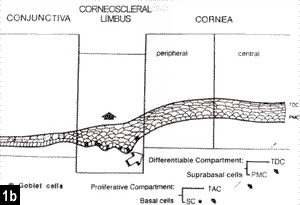  |
|
| Histological image of the limbus (1a). The corneal epithelial stem cells are situated in the basal layers of the limbus (1b: proliferative compartment). Stem cells autoregenerate and give origin to more differentiated cells (transition and postmitotic cells). From the basal layers of the limbus, cells migrate toward the periphery and the center of the cornea (1c). |
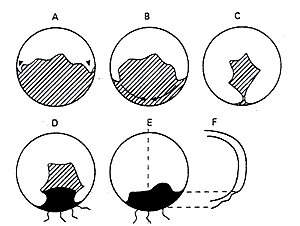 |
|
 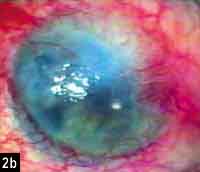 |
|
 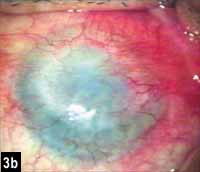 |
|
| Corneal conjunctivalization. The proliferative response of the perilimbal conjunctiva is stimulated by corneal wounds. In case of limbal deficiency, the conjunctiva invades the cornea, partially (2a, 3a) or completely (2b, 3b). |
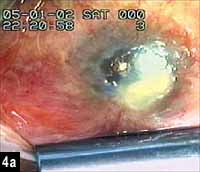 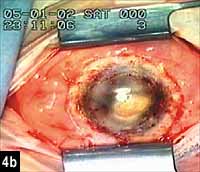 |
|
| Limbal autologous transplantation. The eye (4a) is prepared with conjunctival peritomy (4b). |
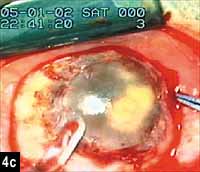  |
|
| The conjunctival pannus is removed (4c). A patch of amniotic membrane is laid on the cornea and sutured on the conjunctiva with Vicryl 7-0 (4d). |
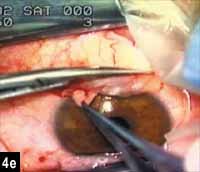 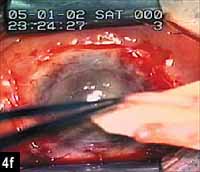 |
|
| Two limbal flaps are removed from the healthy fellow eye at 12 and 6 o’clock, where the concentration of stem cells is higher (4e, 4f). |
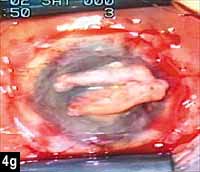 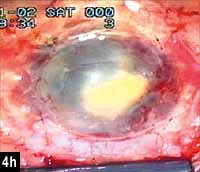 |
|
| The grafts are implanted on the amniotic membrane (4g, 4h). |
For Your Information:
- Vincenzo Sarnicola, MD, can be reached at Ospedale Misericordia, Polo Universitario, Unità Operativa di Oculistica, 58100 Grosseto, Italy; (39) 0564 414775; fax: (39) 0506-425691; e-mail: v.sarnicola@tiscalinet.it. Dr. Sarnicola has no direct financial interest in the products mentioned in this article, nor is he a paid consultant for any companies mentioned.
- Luigi Conti, MD, can be reached at Ospedale Misericordia, Polo Universitario, Unità Operativa di Oculistica, 58100 Grosseto, Italy; (39) 0564-485216; fax: (39) 0564-485431; e-mail: l.conti@usl9.toscana.it. Dr. Conti has no direct financial interest in the products mentioned in this article, nor is he a paid consultant for any companies mentioned.
